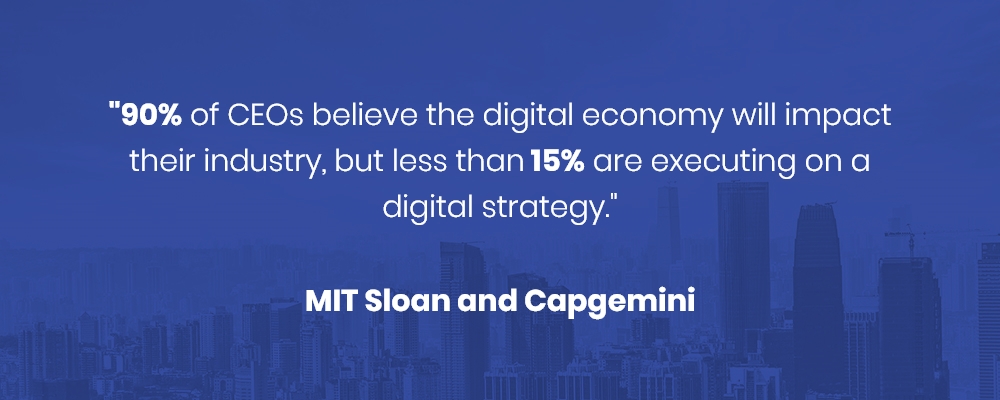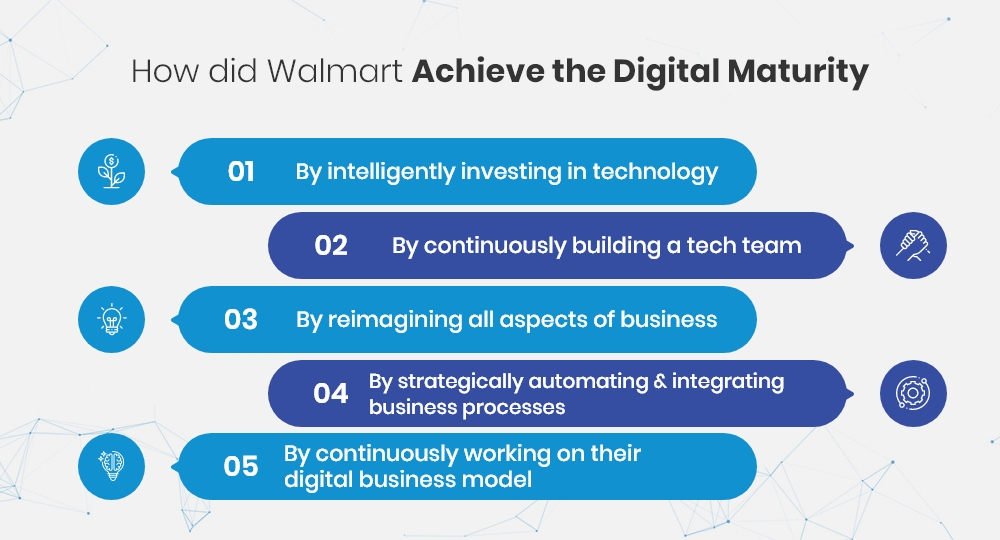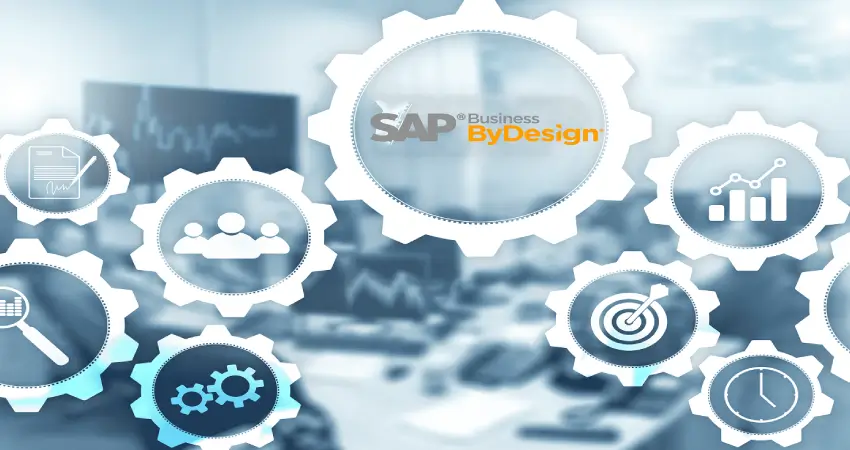Building modern businesses on handwritten ledgers and stickies just isn’t practical today considering the growth objectives. The always increasing nip and tuck affair and customer expectations for improved and innovative products have impelled businesses to strategically think and plan on building a digitally stable organization. A digitally mature organization sets you up to be more agile, flexible and opens new growth opportunities as well.
As we make a switch from paper and spreadsheets to smart applications for standardizing our business processes, we are accredited to reimagining how we do business, or how we engage our customers with digital technologies by our side. This evolution from legacy to modern is known as ‘Digital Transformation’. However, it is not just about implementing digital technologies for the sake of becoming digital, but looking at the business through the digital lens and analyzing where technology could really change the dynamics of the organization.
Successful digital transformation involves creating new, or improvising existing business processes, culture, and customer experiences and identifying opportunities that have the greatest business impact on changing market requirements. However, no matter how much we believe in digital transformation, only a few of us know exactly how to achieve it. Digital Transformation is not achieved overnight, but it is an ongoing process; we need to constantly work on the best practices to achieve digital maturity.

So, let’s learn from the research conducted by MIT Sloan and Deloitte1 on five key practices that make companies digitally mature.
5 Key Practices to Building a Mature Digital Business
As described by the thought leaders, Digital Maturing isn’t an immediate process; leaders need to constantly re-evaluate their entire business setup from the ground level. The following principles are believed to be effective in embracing the digital maturing process:
- Prioritize your Efforts on Digital Transformation: This is the first step towards achieving digital maturity. The study clearly states that having too many priorities at the same time may prove a barrier to achieving your transformation goals. So, start with analyzing your organization’s cultural traits and implement the required changes driving digital success.
- Discover the Required Resources: Followed by changes in the cultural traits of the organization, determine the sources for funding to support the optimum utilization of skills and growth initiatives. This may include practicing business operations on the advanced applications that can direct the digital initiatives. The effective execution of these applications will take you closer to achieving digital maturity.
- Cultivate Digitalization in the Business Landscape: With funding and right planning by your side, focus on the business areas where initiatives related to digital maturity could be of great and visible impact. The modified organizational framework coupled with the team effort can together help in embracing the digital transformation journey.
- Empower the Organization with Digital Advocates: Give opportunity to the employees who have ideas to support the Digital Transformation. These digital advocates have the ability to put in the required efforts and are least likely to resist the organizational changes.
- Blend Capabilities with the Digital Strategies: Integrate the right resources with the digital strategies to finally embrace the organizational transformation. The combined efforts of the two will help the business achieve the flexibility to keep pace with the rapidly changing digital environment in the long run.
The study clearly states that maturing digitally can take time and the endpoints of the digital change are updated continually. Thus, businesses need to craft real digital objectives through technology and business innovation.

Embrace Digital Transformation with the State-of-art Technology
Transformative technologies like Cloud ERPs are drastically changing the way businesses function, innovate and gain insights, supporting the digital transformation efforts. Digitally mature organizations believe in Cloud ERP software as the present and future of the digital transformation. The technology unifies the business data and transactions into a centralized platform and offers ubiquitous access to the shared network, storage, and other applications with minimum IT and management efforts. Cloud ERPs’ capability to integrate with new technologies lays the foundation to achieving digital maturity, growth and success. The other benefits of cloud ERP are as follow:
- Reduced cost as no IT and hardware required
- Easy access to business information anytime, anywhere
- Quicker implementation and data transfer
- Improved transparency and visibility across the entire organization
- Enhanced integration capabilities, and more…
Does cloud ERP seem to match your digital transformation goals? Then this is the right platform to ponder your thoughts on adopting the same. Learn how a unique cloud product can mitigate all your daily challenges and can help you achieve digital maturity with its unique capabilities.
Start your Digital Journey with SAP Business ByDesign
SAP Business ByDesign is an intelligent Cloud based ERP for midsize companies managed, supported, and hosted by SAP. The solution helps the MM leaders scale and compete without the complexity of cost and infrastructure. This quick to implement business solution easily connects with business functions across the entire organization with time tested best practices and in-depth analytics to meet your digital transformation objectives. This all-in-one business suite could prove an opportunity for the mid marketers to join the enterprise league.
So, don’t wait to win over the market anymore, explore all SAP Business ByDesign benefits for your company and start working on your digital maturing plan today. Get in touch with us; we can help you design your unique strategies with a personalized business automation solution.
Reference:








